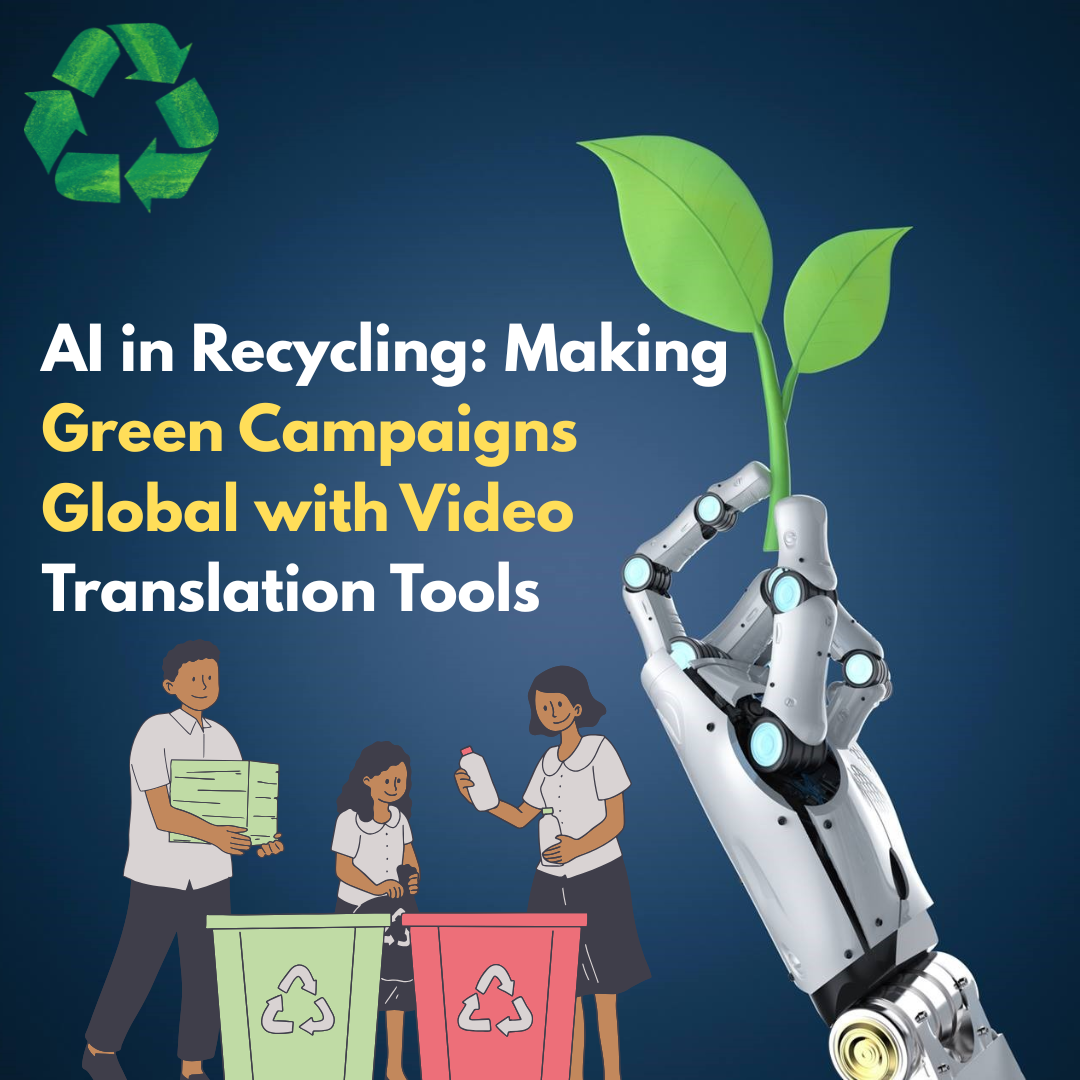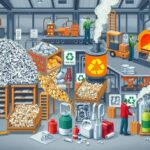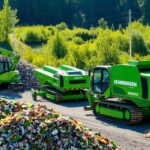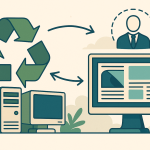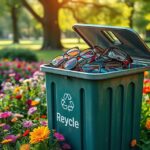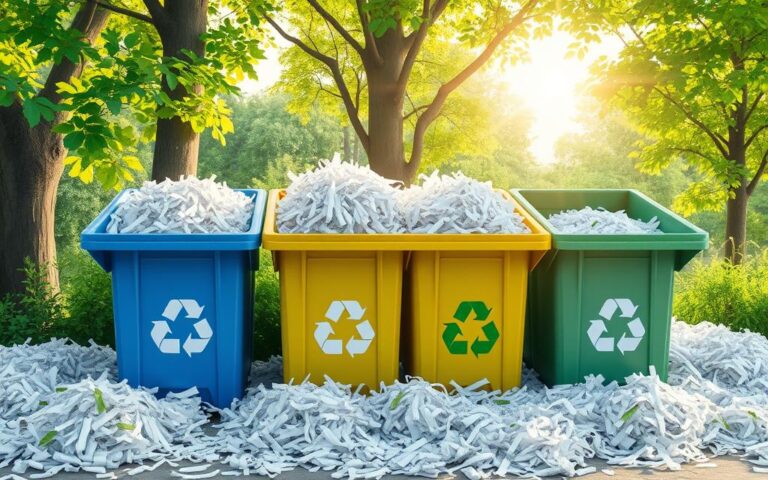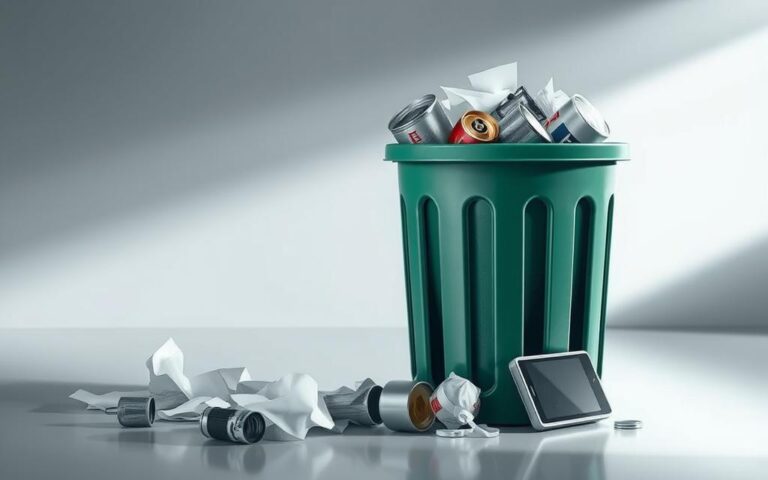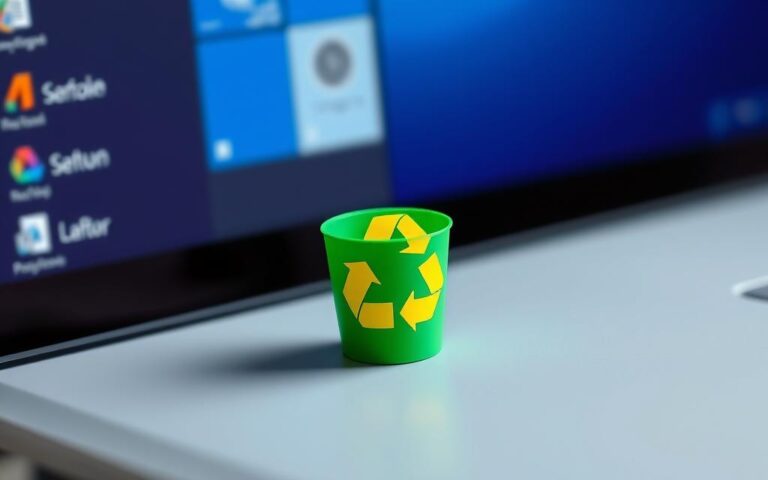AI in Recycling: Making Green Campaigns Global with Video Translation Tools
In today’s climate-conscious world, recycling has become more than just a civic responsibility—it’s a global necessity.
As climate change continues to impact communities worldwide, educating the masses about sustainable practices like recycling is crucial.
However, one major barrier to the effectiveness of environmental campaigns is language. A recycling awareness video made in English may not reach or resonate with audiences in rural India, South America, or parts of Africa.
In this blog, We will figure out how AI-powered video translation tools step in, helping scale environmental messaging across linguistic and cultural boundaries.
The Urgent Need for Global Recycling Awareness
Despite years of awareness programs, many countries still struggle with waste segregation, recycling habits, and understanding of environmental damage.
Plastic waste is piling up, e-waste is mismanaged, and many regions still burn garbage, contributing to greenhouse emissions. According to the World Bank, global waste is expected to grow by 70% by 2050 if current trends continue.
To fight this, international organizations, governments, and eco-conscious brands are pushing green campaigns—but without global accessibility, their efforts fall short.
Language inclusivity is critical. Recycling isn’t a Western problem or an Eastern responsibility—it’s a shared crisis.
Why Recycling Campaigns Need Global Reach
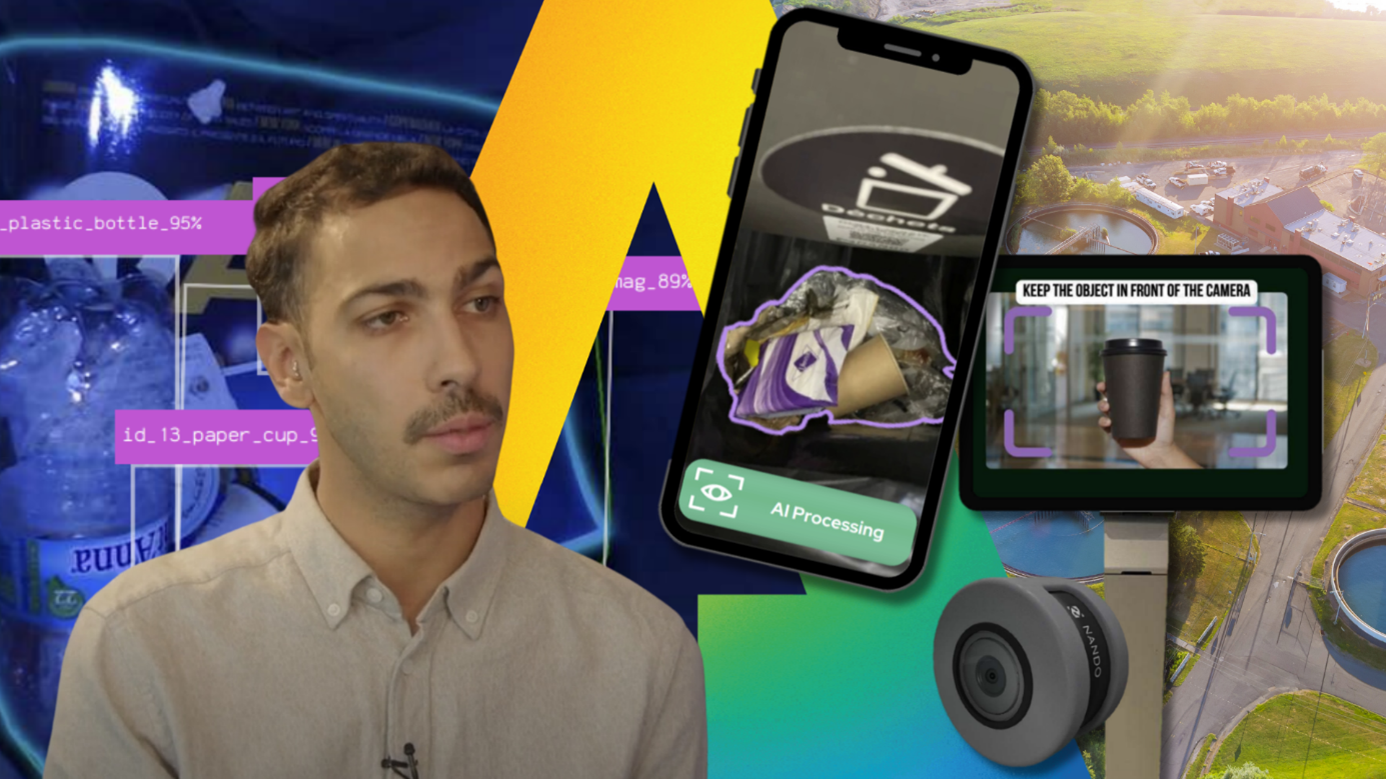
Recycling awareness must be localized to achieve meaningful impact. What works in New York may not work in Nairobi. Cultural beliefs, literacy levels, and access to information all vary. To change behavior on a global scale:
- Content must be multilingual.
- Information should be easy to understand.
- Campaigns should reflect local contexts.
Traditional translation methods, however, are slow and expensive. Hiring translators, voice-over artists, and editors for every language adds time and cost. That’s where AI video translation tools revolutionize the game.
How AI Enhances Video Translation
AI-powered video translation tools can automatically translate, subtitle, and even dub videos into multiple languages. These tools use advanced natural language processing (NLP), voice synthesis, and contextual learning to retain original tone and clarity. Here’s how they elevate recycling campaigns:
Fast Turnaround
AI tools can translate and dub content in minutes, making real-time multilingual awareness possible.
Consistency & Accuracy
Unlike manual translators who may introduce inconsistencies, AI maintains uniform messaging across languages.
Cost-Effective
A single video can be translated into 50+ languages with a one-time fee—making mass outreach feasible for NGOs and green startups.
Voice Cloning
With advanced AI, original speakers’ voices can be cloned, ensuring emotional consistency across languages.
Inclusivity through Subtitling
Subtitles for hearing-impaired audiences and low-bandwidth areas boost accessibility.
Top AI Video Translation Tools for Eco Campaigns
Several tools are making it easy for recycling advocates to go global. Here are a few top performers:
HeyGen
Offers AI dubbing in over 40 languages with lip-syncing, ideal for short explainer videos.
Deepdub
Supports native voice dubbing and has worked with global streaming content—great for documentaries.
Papercup
Automatically dubs videos into multiple languages using synthetic voices while preserving tone.
Veed.io
Known for its AI subtitle generator and translation features, perfect for social media campaigns.
Murf.ai
Allows environmentalists to create translated voiceovers with lifelike, emotional tones. (Bonus: It’s widely used in educational content.)
These tools help campaigners create engaging, impactful content that cuts across borders without needing massive budgets or production teams.
Benefits of Using AI in Recycling Advocacy
Using AI video translation in recycling campaigns isn’t just a convenience—it’s a game-changer. Here’s why:
Global Scalability
Share your campaign across continents without the need to reshoot or hire new teams.
Improved Engagement
Viewers are more likely to engage when content speaks their language—literally.
Local Action from Global Vision
A message translated into local dialects has a higher chance of sparking real change in communities.
Time Efficiency
Launch simultaneous campaigns in multiple regions during key global events like Earth Day.
Stronger Collaborations
NGOs and governments from different regions can align better when messages are uniformly understood.
Challenges and Ethical Considerations
While AI makes video translation easy, it’s not without its challenges:
Contextual Misunderstanding
AI might misinterpret idioms or culturally sensitive topics, leading to confusion or offense.
Lack of Human Emotion
Some voiceovers may sound robotic and fail to deliver the emotional weight needed for topics like environmental damage.
Dependence on English Source Scripts
AI tools typically perform best when translating from English, which can limit input diversity.
Data Privacy and Security
Uploading videos to cloud-based AI platforms may pose data security concerns, especially for campaigns with sensitive political or community messaging.
Ethical Voice Cloning
Using someone’s voice via AI requires consent. In community campaigns, clarity around permissions is essential.
While these issues are manageable, they must be considered seriously when deploying AI at scale.
Conclusion
The future of recycling advocacy lies in inclusivity, and language should never be a barrier to change. With AI-powered video translation tools, environmental campaigns can finally transcend borders, languages, and cultures.
Whether you’re a nonprofit running grassroots initiatives or a brand championing eco-packaging, AI gives you the power to speak to the world—literally.
As the world races against time to protect its ecosystems, integrating AI in recycling campaigns ensures your message doesn’t just echo in your native language—it resonates globally.
With tools like Murf.ai, HeyGen, and Paper Cup, we’re not just spreading awareness—we’re creating understanding.
Let’s use technology to build a cleaner planet. Because when the message is understood by all, the world listens.

